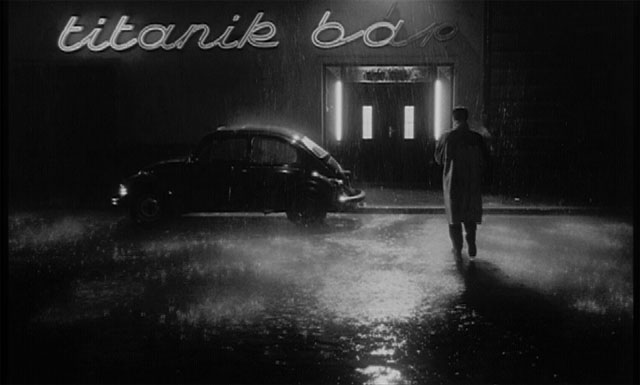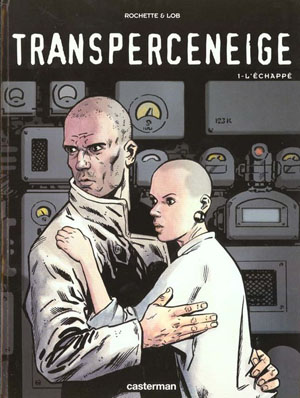“Pining for ‘nun-lust, torture porn, church desecration, and bad taste’?” asks Bright Lights Film Journal editor Gary Morris. “Well, really, who isn’t? Happily, your wait is over.” He’s referring, of course, to the BFI’s recent release of Ken Russell’s The Devils (1971) on DVD: “Regular Bright Lights writer Gordon Thomas contributes a detailed and admirable analysis of the film (and its relationship to Aldous Huxley’s The Devils of Loudun) from the vantage point of four decades later.”
Introducing the new issue, Gary notes that the BL team has “also been thinking a lot lately about Anthony Mann, who’s finally getting his due as a pantheon auteur with a third English-language monograph coming soon (after those by Jeanine Basinger and William Darby). That fact, and an increasingly strong online presence among film writers, inspired us to include a sidebar of three Mann-related pieces this time. Two are rarities disinterred from 1970s print issues of Bright Lights: Stephen Handzo‘s brilliant, definitive study of Mann’s early westerns and Robert Smith‘s vibrant study of the ’50s noirs. Lee Sabo adds a commanding piece on one of the director’s less analyzed works, The Fall of the Roman Empire, in the process happily skewering Ridley Scott’s godawful Gladiator and a few other reactionary post-Mann macho epics.”
And there’s much, much more in this walloping Issue 76, but let’s scroll for the moment down to Ela Bittencourt, who argues that “it takes a film like Damnation, released in 1988 and falling in the middle of [Béla] Tarr’s career, with four features preceding and four following it, to demonstrate just how much can be happening when ostensibly nothing happens.”
Which leads us directly to the new issue of Camera Lucida, featuring Nevena Matovic‘s interview with Tarr. Also in English, you’ll find Andreas Ströhl on “Solitude in the Cinema” and Ronald Bergan on music, acting and the late Claude Miller.
More reading. The sudden, rapid and, above all, sweeping evolution of cinema technology has been on David Bordwell and Kristin Thompson’s minds for several months now, resulting in a series of must-read posts at their blog, Observations on film art. And Bordwell‘s entry today is another. James Cameron and Peter Jackson, “along with George Lucas, have used their roles as superstar directors to prod exhibitors to adopt expensive new technology. They acted as the figureheads for the switch to digital in 2005, using 3D as the incentive for exhibitors to convert. A few years later, after proposing 3D television, Cameron upped the ante by urging higher frame rates for film. Jackson has joined him by actually making a film [The Hobbit] at 48 fps. Cameron has said he prefers 60 fps, which may mean that the goal posts get shifted again when Avatar 2 or something else comes along…. Lucas and Cameron, and then Jackson, grasped that if cinema technology went wholly digital, it would change in fundamental ways. It would turn a medium into a platform, like a computer operating system. The most basic technology of showing a movie would become subject to rapid, radical, ceaseless remaking. It would demand versions, upgrades, patches, fixes, tweaks, and new software and hardware indefinitely…. Meanwhile, exhibitors face a long future of payouts. When cinema goes IT, as Steve Jobs might put it, we should expect a big bag of pain.”
A bit of related viewing from Jason Kottke:
Erik Morse in frieze on Making Chinatown: “In true LA fashion, Singaporean artist Ming Wong has refurbished Polanski’s original cinematic simulacrum of the city by digitally rendering it as a second-stage simulacrum of a Baudrillardian noir, where identity, place and ethnicity become fluid categories.”
The Chiseler‘s running Robert Lamberton‘s translation of excerpts from a conversation with Jean Epstein as well as Imogen Smith‘s essay on three of his films. A retrospective Epstein’s work will run at Anthology Film Archives in New York from June 1 through 7.
Michael Apted’s Up Series began when he shot a documentary on the lives of 14 seven-year-old British children in 1964. 7 Up was followed by 14 Up and so on. Tonight sees the premiere of 56 Up—three parts, one hour each—on television in the UK. Stephen Moss talks with Apted and his subjects for the Guardian.
New York. Douglas Crimp, who has a new book out, “Our Kind of Movie”: The Films of Andy Warhol, will introduce a Light Industry screening of Warhol’s Paul Swan (1965) this evening.
In the works. Main production is now underway on Bong Joon-ho’s first feature in English, Snowpiercer, an adaptation of the French graphic novel Le Transperceneige featuring Chris Evans, Tilda Swinton, John Hurt, Octavia Spencer and Jamie Bell. Park Chan-wook is on board as a producer. Patrick Frater has more at Film Business Asia.
Simon Dang reports that Ezra Miller has joined Mia Wasikowska and Paul Giamatti in the cast of Sophie Barthes’s adaptation of Flaubert’s Madame Bovary. Also at the Playlist, Kevin Jagernauth notes that Isabella Rossellini, Melanie Laurent and Sarah Gadon are joining Jake Gyllenhaal in the cast of Denis Villeneuve’s “existential erotic thriller,” An Enemy.
Neil Marshall (The Descent) will be directing The Last Voyage of the Demeter. Borys Kit in the Hollywood Reporter: “Demeter was the name of the ship that transported Dracula from Transylvania to London in Bram Stoker’s classic tale. In that 1897 novel, the ship washes up on the shores of England, tattered and broken, with one raving-mad survivor. Written a decade ago by Bragi Schut (Season of the Witch), the script tells the tale of that journey, in which the crew is slaughtered one-by-one by a mysterious passenger.”
In other news. The Cannes Film Festival‘s announced that the Un Certain Regard Jury is now complete: Tim Roth (President), actress Leïla Bekhti, director and producer Tonie Marshall, film critic Luciano Monteagudo and Sylvie Pras, Head of Cinemas at Centre Pompidou in Paris and Artistic Director of La Rochelle Film Festival.
“The 27th Midnight Sun Film Festival (13.-17.6.2012) will be graced by the presence of two female actors who began their career in the 1950s: Finland’s only Hollywood star Taina Elg, and Ingmar Bergman’s protégé Harriet Andersson. Of directors, together with their productions, the American cult movie maker Alan Rudolph, Hungarian Béla Tarr, whose quite personal films never fail to cause a stir, two Swedish talents of a younger generation—Ruben Östlund and Axel Petersén—and the Portuguese Rodrigo Areias, also acclaimed as a producer, have so far confirmed their upcoming visit to Lapland.”
For news and tips throughout the day every day, follow @KeyframeDaily on Twitter and/or the RSS feed.






